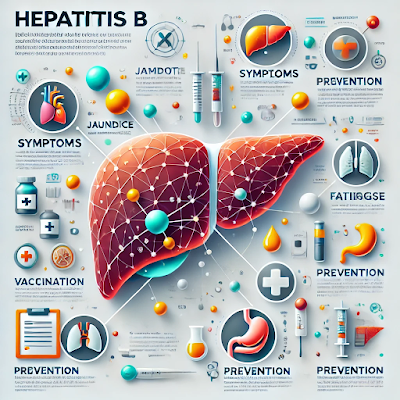Cannabis to Psychosis in Teens
Synopsis: A review examined how marijuana utilizes powers metabolomic designs connected to maniacal-like encounters in teenagers. Blood tests uncovered that non-marijuana clients showed provocative metabolic changes related to mind flights, while weed clients displayed shifts in energy-related metabolites attached to cerebrum ketogenesis.
These discoveries recommend that marijuana use might set off particular sub-atomic pathways in crazy-like encounters. Scientists likewise distinguished special metabolomic designs connected with various side effects aspects, like distrustfulness and separation.
While primer, the review offers bits of knowledge into customized approaches for understanding and treating mental circumstances. The outcomes feature the capability of accuracy psychiatry to reveal the organic underpinnings of psychological well-being problems.
Key Realities:
• Marijuana clients and non-clients show different metabolomic designs connected to insane-like encounters.
• Non-clients showed provocative changes, while weed clients displayed energy digestion shifts.
• Discoveries recommend exceptional metabolic marks for explicit insane side effect aspects.
Source: College of Eastern Finland
An exploratory review led at the College of Eastern Finland has inspected metabolomic designs related to maniacal-like encounters in youths, featuring the impact of weed use.
These discoveries recommend that particular metabolite designs related to crazy-like encounters might change between weed clients and non-clients, possibly reflecting different fundamental atomic pathways in maniacal-like encounters.
The review investigated blood tests from 76 young adult short-term patients encountering sadness, utilizing mass spectrometry to evaluate metabolite focuses. The analysts recognized varieties in lipid digestion and oxidative pressure, explicitly about mind flights.
Strangely, among youths who didn't utilize marijuana, these encounters additionally connected with fiery metabolic changes. Conversely, marijuana-related changes were fundamentally attached to metabolites engaged with elective energy pathways in the mind, especially those connected with ketogenesis.
Albeit these discoveries are fundamental, they recommend sub-atomic contrasts in the maniacal-like encounters of teenagers with and without a background marked by weed use.
The outcomes were distributed in Translational Psychiatry.
"Apparently unique metabolomic changes are related to crazy-like encounters if the individual has utilized weed," notes Karoliina Kurkinen, a Doctoral Scientist at the College of Eastern Finland and the primary creator of the review.
"These modifications are not guaranteed to demonstrate future psychosis or an insane issue. Nonetheless, it will be fascinating to check whether these early metabolomic changes relate to various mental circumstances further down the road."
The concentrate additionally recognized interesting metabolomic designs related to explicit elements of maniacal encounters, like dreams, suspicion, visualizations, negative side effects, thought problems and separation.
These discoveries support a re-assessment of how psychiatry orders side effects, proposing that unmistakable side effect aspects could be connected to novel metabolic marks.
Later in, the group expects to direct a comparable report with a bigger example size and follow-up and vault-based examinations to follow mental determinations after some time.
"We are just starting to expose what's conceivable around here of exploration," Kurkinen says. "Future examinations zeroing in on side effect aspects and particular natural pathways could propel accuracy psychiatry and work on how we might interpret mental problems."
Unique
An exploratory investigation of metabolomics in endogenous and pot use-related crazy-like encounters in youthfulness
In pre-adulthood, crazy-like encounters (PLE) may demonstrate potential prodromal side effects before the beginning of psychosis. Metabolomic studies have shown guarantee in furnishing important experiences into anticipating psychosis with upgraded accuracy contrasted with ordinary clinical elements.
This study explored metabolomic changes related to PLE in 76 discouraged youths who matured 14-20 years. Serum groupings of 92 metabolites were dissected with fluid chromatography-mass spectrometry. PLE were evaluated utilizing the Adolescent Encounters and Wellbeing (Better Believe it) survey.
The relationship between PLE side effect aspects (fancies, suspicion, fantasies, negative side effects, thought confusion, and separation) and metabolite focuses was dissected in straight relapse models adapted to various covariates.
The side effect aspects are reliably connected with the metabolome in various models, aside from those adapted to weed use.
In particular, the visualization aspect was related to 13 metabolites (acetoacetic corrosive, allantoin, asparagine, decanoylcarnitine, D-glucuronic corrosive, guanidinoacetic corrosive, hexanoylcarnitine, homogentisic corrosive, leucine, NAD+, octanoylcarnitine, trimethylamine-N-oxide, and valine) in the different straight models.
In any case, while adapting to marijuana use, eight metabolites were related to mental trips (adenine, AMP, cAMP, chenodeoxycholic corrosive, cholic corrosive, L-kynurenine, neopterin, and D-ribose-5-phosphate).
The outcomes recommend assorted systems basic PLE in immaturity; dreamlike encounters might be connected to provocative capabilities, while weed use might draw in an option metabolic pathway connected with expanded energy interest and ketogenesis in prompting PLE.
The restricted example of people with sorrow confines the generalizability of these discoveries.
Future exploration ought to investigate whether different encounters and related metabolomic changes mutually foresee the beginning of psychoses and related messes. More




Comments
Post a Comment